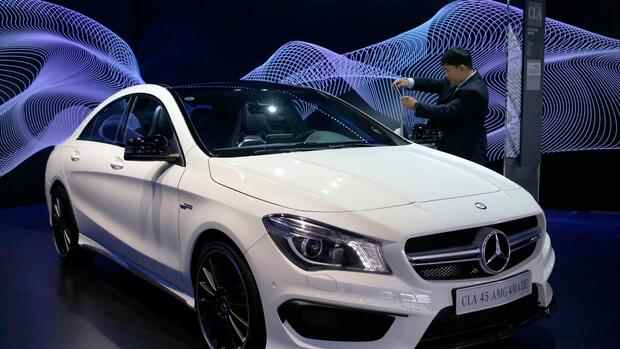Munich The car manufacturer Mercedes-Benz has managed something like a “small landing on Mars”, rejoices Head of Development Markus Schäfer. In concrete terms, the Dax group was able to cover a distance of more than a thousand kilometers without recharging in everyday traffic for the first time with the Vision EQXX, a fully electric research vehicle – and with a comparatively small battery.
The engineers of the brand with the three-pointed star set off on the morning of April 5 with the EQXX from Sindelfingen in Swabia, then crossed the Swiss Alps, passed through northern Italy and arrived in Cassis, France, on the Côte d’Azur in the evening. For the 1008 kilometers driven, the vehicle consumed just 8.7 kilowatt hours (kWh) per hundred kilometers. A record.
This efficiency is “absolutely remarkable, really sensational,” emphasizes Schäfer. But even more important: Mercedes wants to achieve similarly low consumption values with production vehicles in the near future. Schäfer announces a halving here. While luxury sedans available today, such as the EQS, have real consumption values of almost 20 kilowatt hours, his group is aiming for ten kilowatt hours in the future. “That’s the dimension of improvement we’re talking about.”
So the people from Stuttgart want to convert something like a one-liter car into a reality for a wide range of customers. In fact, the long-cherished dream of such a vehicle could be realized as early as 2024, the Handelsblatt learned from corporate circles. In any case, the CLA Coupé will then be the first Mercedes model to roll off the assembly line on the new MMA compact car platform. And much of the technology tried and tested in the EQXX is used here.
Top jobs of the day
Find the best jobs now and
be notified by email.
The new architecture for series such as the A-Class or the GLA is specially designed for electric drives, but a small combustion engine can also be installed if required. An insider explains that anyone who chooses the electricity variant should be able to cover a distance of between 650 and 850 kilometers, depending on the model, before the next visit to a charging station is due. “Even a very good combustion engine can’t do more than that.”
The CLA is particularly aerodynamic
Enormously low consumption values of around ten kilowatt hours, coupled with a long range of more than 800 kilometers, should only be able to achieve models like the CLA that are particularly streamlined due to their flat design. Heavy SUVs like the GLB, on the other hand, will consume significantly more energy. “Of course, air resistance is the most important factor in real consumption,” explains Schäfer. However, the Chief Technology Officer (CTO) at Mercedes does not comment on specific ranges with reference to the competition.
One thing is clear: the noble star clientele should be able to choose from different battery sizes and thus be able to put together an individual range to suit their lifestyle and driving style. However, efficiency is crucial for the group. This is the “new currency” of the industry and every detail must be considered for new vehicle platforms, emphasizes Schäfer. “What I can take in or take out are cells to set the range. But the efficiency has to be fully developed.”
With the help of large batteries, long ranges can be achieved quickly, explains Schäfer. But the real art consists in covering long distances with small energy storage devices. The focus on efficiency offers customers and vehicle manufacturers many advantages. Schäfer speaks of a “win-win situation”.
On the one hand, customers could reduce their operating costs with efficient vehicles. On the other hand, smaller batteries would also benefit Mercedes. “Every kilowatt hour that we don’t install helps the company to continue to be economically successful.”
Batteries are the most expensive component in an electric car. This is also the most important lever for more efficiency. The cell chemistry that Mercedes used in its record drive with the EQXX is also to be used in production vehicles from 2024. Compared to previous configurations, the Swabians use “a lot of silicon at the anode,” explains CTO Schäfer.
Proprietary powertrain
In addition, Mercedes intends to use its specially developed electric powertrain for the first time in the future. This “eATS” achieves an efficiency of 95 percent, whereas conventional electric drives only achieve 80 to 85 percent. With the help of bionic structures and larger structural cast parts, the group wants to save weight and money.
Last but not least, Mercedes wants to drastically reduce the power consumption of its on-board networks. “In the future, every watt will count,” says Schäfer. Therefore, each component that requires energy should be able to be switched off individually, at least when it is not needed.
More: The Ministry of Economics wants to abolish subsidies for plug-in hybrids as early as the end of 2022
